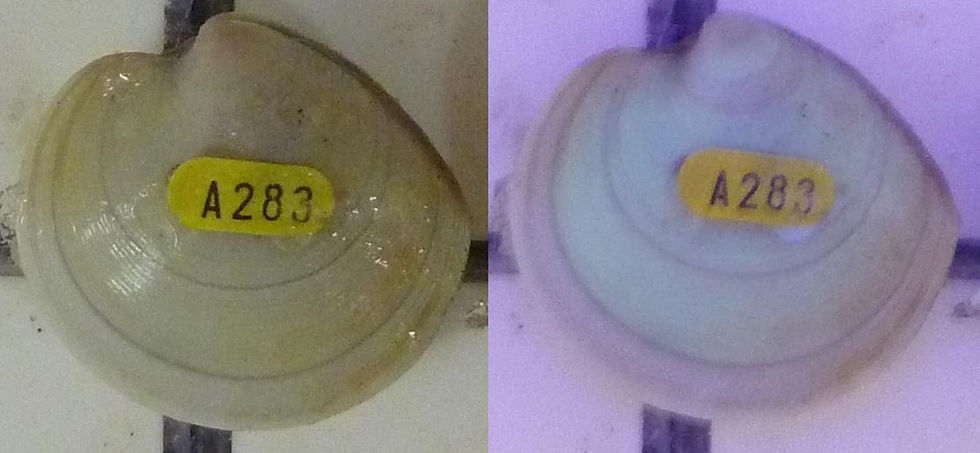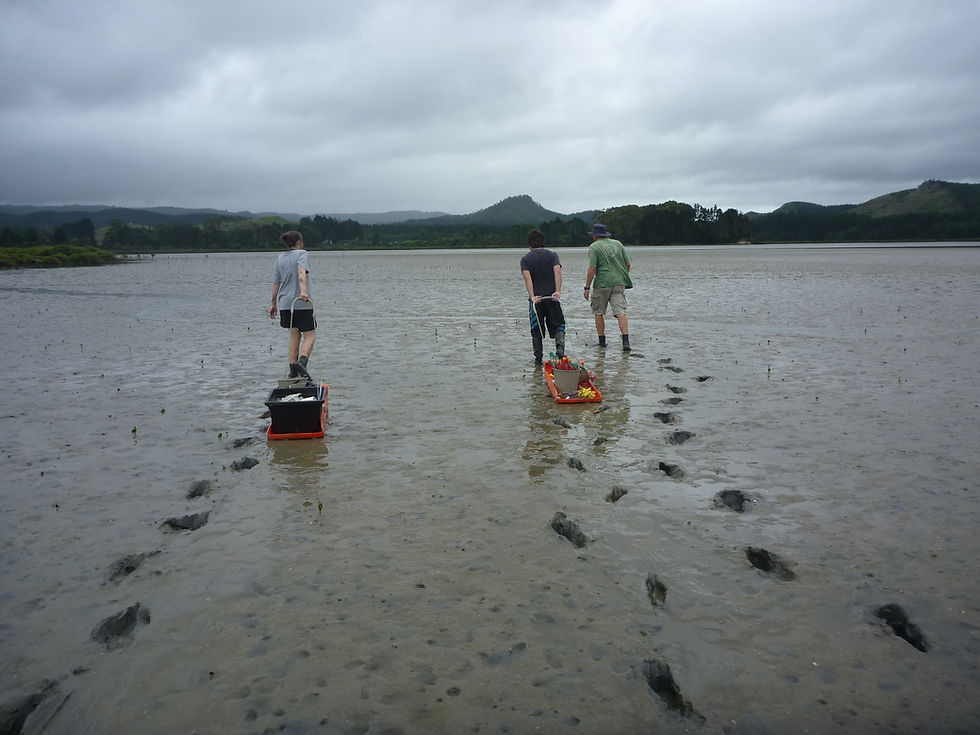Effects of estuaries on open coastal bivalve growth rates
Lab technician - National Institute of Water and Atmospheric Research (NIWA), New Zealand
Advisor:
Dr. Drew Lohrer
About:
Estuarine productivity exported to the open coast on outgoing tides may contribute to secondary production in the vicinity of an estuary mouth. However, land-derived sediments and contaminants that are discharged from estuaries can stress open coastal populations in areas of greatest concentration. The balance of these competing processes likely influences community composition, shellfish condition, and scope for growth on the open coast. My project investigated the estuary-coast interactions on coastal bivalve growth rate, using the suspension feeding bivalve, Dosinia subrosea as representative model species.
I also assisted an MSc student working on mangrove ecology, looking at the how abiotic and biotic disturbances affect decomposition rates, and collecting sediment core for macrofauna diversity. Acknowledged in Gladstone-Gallagher et al. (2014).
Skills:
Staining bivalves with non-toxic fluorescent dye (Calcein), image analysis and size measurements in Image J. Staining via biological staining dye (Rose Bengal), sorting and identifying macrofauna samples.
Species:
-
Fine dosinia (Dosinia subrosea)
-
Various intertidal macrofauna (e.g. polychaete worms, crustaceans, amphipods, molluscs, bivalves, echinoderms)





